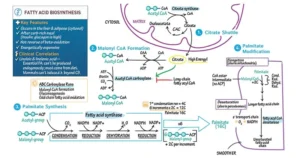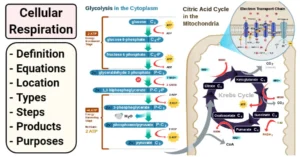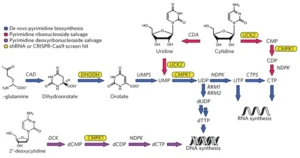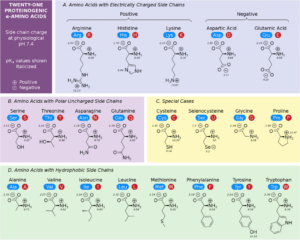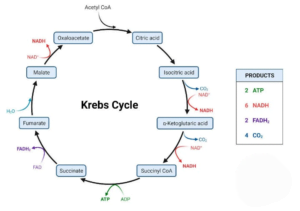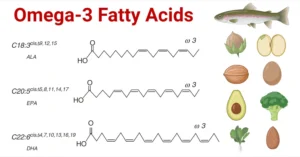The phosphoketolase pathway, also known as the heterolactic pathway, is a metabolic route that plays a crucial role in the breakdown of pentose sugars in certain microbes. This pathway is highly adaptable, enabling organisms to thrive under diverse environmental conditions. By converting carbohydrates into key metabolic intermediates, the phosphoketolase pathway facilitates energy production and biosynthesis, making it a vital component of microbial metabolism. Understanding the detailed steps of this pathway can provide insights into microbial metabolic flexibility, as well as offer potential applications in biotechnology, human health, and environmental sustainability.

Overview of the Phosphoketolase Pathway
The phosphoketolase pathway is predominantly observed in bacteria, yeasts, and archaea. It involves the conversion of pentose sugars, such as xylulose-5-phosphate, into valuable metabolic intermediates like acetyl-CoA and erythrose-4-phosphate. The process begins with the enzyme phosphoketolase, which catalyzes the first reaction, and proceeds through subsequent reactions that generate ATP, acetyl-CoA, and other important metabolites.

Key Steps in the Phosphoketolase Pathway
The pathway consists of three main steps, which are outlined below:
1. Conversion of Xylulose-5-Phosphate
- Enzyme: Phosphoketolase.
- Reaction: Xylulose-5-phosphate is cleaved into two products:
- Glyceraldehyde-3-phosphate (GAP), a key intermediate in glycolysis.
- Acetyl-phosphate, a precursor to acetyl-CoA.
- Importance: This step is crucial for the breakdown of pentose sugars and the initiation of energy production.
Reaction:
Xylulose-5-phosphate+Pi→Glyceraldehyde-3-phosphate+Acetyl-phosphate
2. Glyceraldehyde-3-Phosphate Conversion
The generated glyceraldehyde-3-phosphate can follow two alternative pathways:
- Route 1: Conversion to Pyruvate:
- Enzyme: Glyceraldehyde-3-phosphate dehydrogenase (GAPDH).Reaction: Glyceraldehyde-3-phosphate is converted into pyruvate, generating ATP through substrate-level phosphorylation.Significance: This step is essential for energy production, as ATP is generated for the cell’s energy needs.
Glyceraldehyde-3-phosphate+NAD++Pi→Pyruvate+NADH+H++ATP - Route 2: Conversion to Erythrose-4-Phosphate:
- Enzyme: Transaldolase.Reaction: Glyceraldehyde-3-phosphate is converted into erythrose-4-phosphate (E4P), which is important for nucleotide and aromatic amino acid biosynthesis.Significance: E4P serves as a precursor for the synthesis of key biomolecules.
Glyceraldehyde-3-phosphate+Fructose-6-phosphate→Erythrose-4-phosphate+Xylulose-5-phosphate
3. Formation of Acetyl-CoA
In the final step of the pathway, acetyl-phosphate is converted to acetyl-CoA through the action of the enzymes acetate kinase and phosphate acetyltransferase. Acetyl-CoA is a central metabolite in many cellular pathways, including the tricarboxylic acid (TCA) cycle, fatty acid synthesis, and amino acid metabolism.
- Enzymes involved: Acetate kinase and phosphate acetyltransferase.
- Reactions:
- First Reaction: Acetyl-phosphate is converted to acetate, generating ATP.
Reaction:
Acetyl-phosphate+ADP→Acetate+ATP - Second Reaction: Acetate is converted to acetyl-CoA.
Reaction:
Acetate+CoA→Acetyl-CoA+CoA
- First Reaction: Acetyl-phosphate is converted to acetate, generating ATP.
Phosphoketolase Pathway Overall Reaction
The overall reaction of the phosphoketolase pathway can be summarized as follows:
Xylulose-5-phosphate+2ADP+2Pi→Acetyl-CoA+Erythrose-4-phosphate+2ATP+2H2O
This reaction showcases the versatility of the pathway in producing both high-energy molecules (like ATP) and intermediates crucial for biosynthesis, such as acetyl-CoA and erythrose-4-phosphate.
Applications of the Phosphoketolase Pathway
The phosphoketolase pathway has significant potential for various applications in biotechnology, human health, and environmental remediation. Some of the key applications are as follows:
1. Industrial Production
- The pathway is widely used in biotechnological applications to produce important platform chemicals such as acetyl-CoA.
- Acetyl-CoA is a precursor for producing biofuels, bioplastics, and other high-value compounds.
- This offers a sustainable alternative for chemical production, especially when derived from renewable biomass sources like pentose sugars.
- Example Applications:
- Biofuel production: Acetyl-CoA can be used in biofuel production pathways, such as ethanol or biodiesel synthesis.
- Bioplastics: Acetyl-CoA is also used in the synthesis of biodegradable plastics.
2. Probiotics and Gut Health
- Some probiotic bacteria in the human gut utilize the phosphoketolase pathway to metabolize pentose carbohydrates that are inefficiently processed by other gut microorganisms.
- The pathway contributes to the production of short-chain fatty acids, such as acetic acid, which support gut health by providing energy to colon cells and maintaining a healthy microbiome.
- Benefits:
- Enhances gut health by promoting the growth of beneficial bacteria.
- Helps in maintaining a balanced microbiota, which is crucial for digestion and immunity.
3. Carbon Flux Regulation
- The phosphoketolase pathway plays a crucial role in the regulation of carbon flux in microbial metabolism.
- By providing an alternative route for carbohydrate metabolism, it allows microbes to adapt to varying carbon sources in the environment.
- This adaptability is particularly beneficial for metabolic engineering, where microbes can be tailored to produce specific products based on available nutrients.
- Example Applications:
- Metabolic engineering: Optimizing microorganisms for industrial applications such as biofuel production, where the efficient use of available sugars is critical.
4. Bioremediation
- Certain bacteria that utilize the phosphoketolase pathway have the ability to degrade complex chemical compounds, including aromatic compounds, which are often toxic to the environment.
- These bacteria can be employed in bioremediation processes to clean up contaminated environments.
- Example Applications:
- Pollutant removal: Using microbes with the phosphoketolase pathway to break down harmful chemicals and toxins in soil and water.
- Environmental cleanup: Biodegradation of industrial pollutants, such as aromatic hydrocarbons, in contaminated sites.
The phosphoketolase pathway is a fascinating and versatile metabolic route that allows microorganisms to efficiently utilize pentose sugars, converting them into valuable intermediates like acetyl-CoA and erythrose-4-phosphate. Its ability to generate ATP and support biosynthesis makes it an essential pathway in microbial metabolism.
The pathway’s broad applicability in industrial production, probiotics and gut health, carbon flux regulation, and bioremediation highlights its potential for innovative solutions in biotechnology, environmental sustainability, and human health. By deepening our understanding of this metabolic pathway, we can unlock new possibilities for the sustainable production of biofuels, bioplastics, and other valuable chemicals, while also advancing our understanding of microbial metabolism and environmental remediation.
The phosphoketolase pathway exemplifies the incredible metabolic flexibility of microorganisms and their ability to adapt to different environmental conditions. As research continues, it holds promise for developing novel biotechnological applications and enhancing our approach to global challenges such as sustainable chemical production and environmental conservation.

